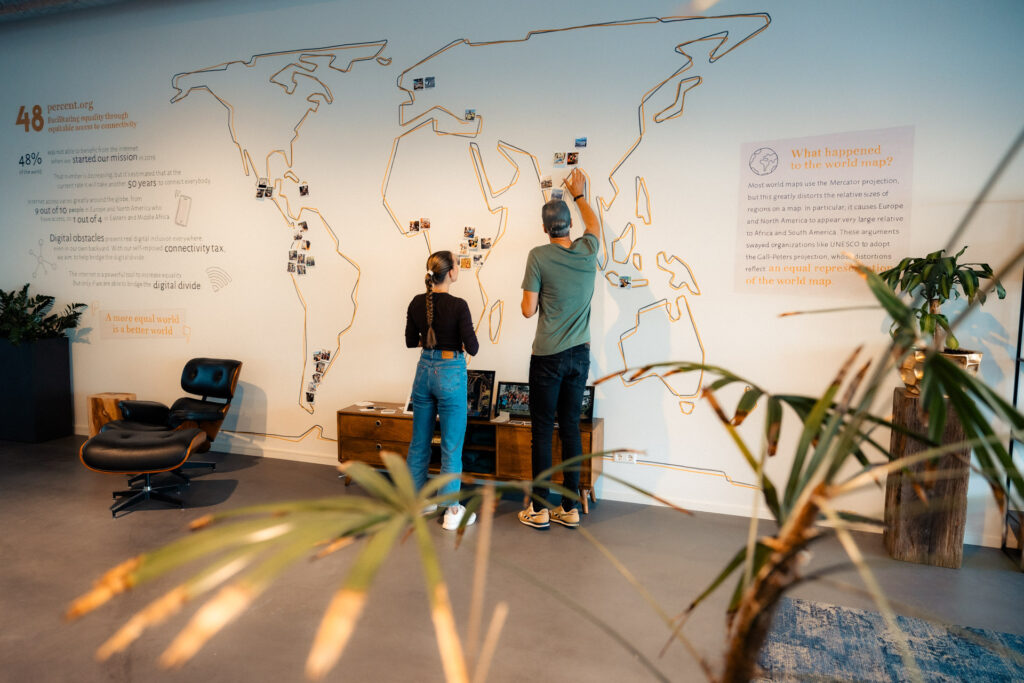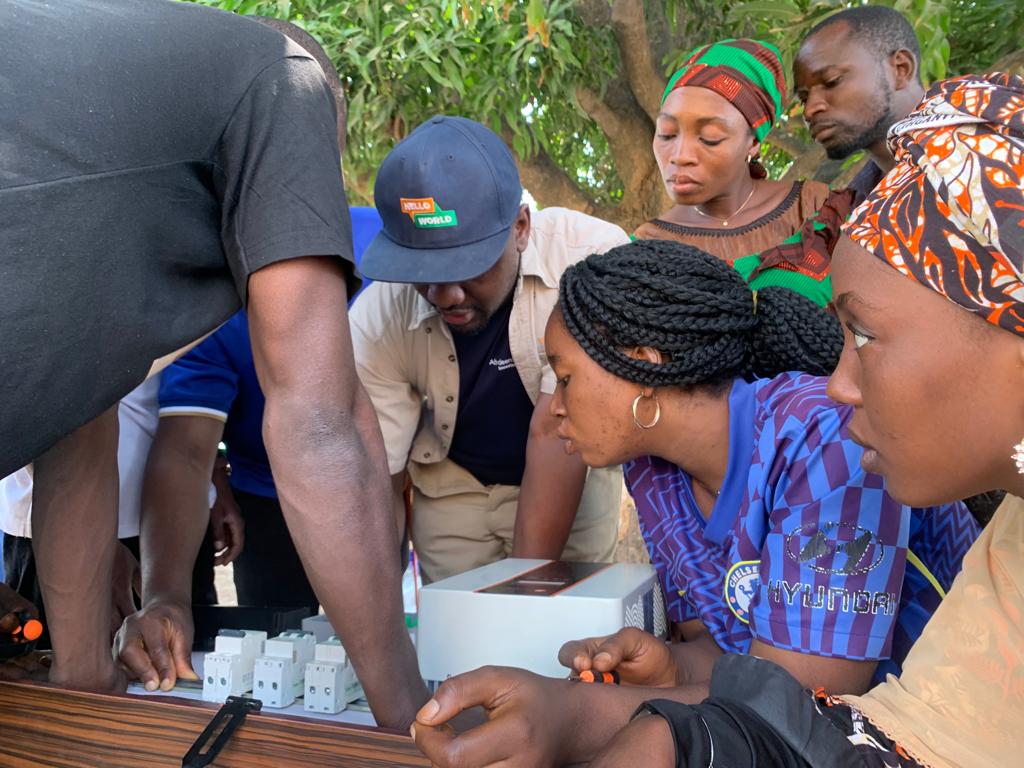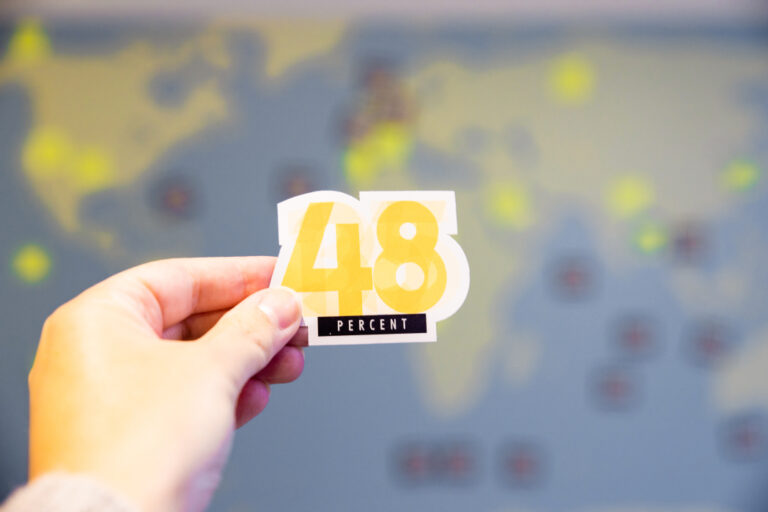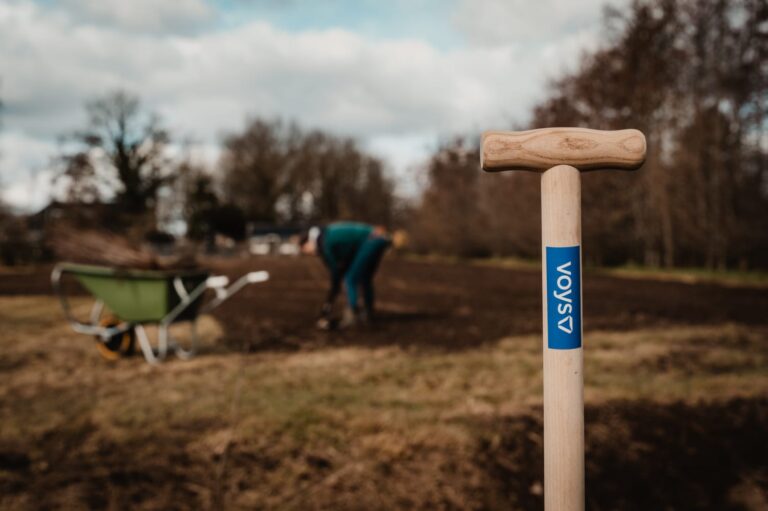Driven by purpose: how our foundation 48percent.org leaves a lasting impact
We share how our foundation, 48 percent, ensure that they fund projects that fit its mission, and therefore fit Voys’ purpose, through three program lines.


We are here to make an impact, which is why we have a foundation. But we’re not just donating money. We’re actually very involved. We want to let you know that we’re spending your money very thoughtfully and that there is a vision behind it.
48 percent was established by Voys in 2019, and has since made a direct impact for more than 40 000 people worldwide through its projects and collaborations. We asked our colleague Theresa, who does project coordination for 48 percent to tell us more about 48 percent’s mission and its funding decision making.
Why does the mission of 48 percent fit with Voys?
At the heart of 48 percent’s mission is a shared vision with Voys: to give everyone an equal voice. At Voys, we do this both by connecting people with each other using our technology, and by connecting with people on an equal basis. Whether this applies internally or externally, nationally or internationally, there will always be people who don’t have the opportunity to let their voices be heard. Lack of connectivity or digital knowledge can lead to exclusion. This is where 48 percent comes in. By addressing the digital divide, 48 percent’s work is not just about connecting people to the internet; we’re opening doors to education, healthcare, and economic opportunities.
Through the various projects 48 percent contributes to, thousands of people have received internet connectivity, training in digital literacy, and knowledge on how to ensure their privacy and safety online. It’s not like we’re using a Magic 8 ball to decide who gets funding, we’ve actually set up a whole process for this. To guide us in our decision making, we’ve structured our efforts around three program lines. These help us make funding decisions. When we receive project applications, we ask our (potential) partners to identify which program line their project falls under.
Our responsibility as 48 percent is to fund projects that fit the mission of 48 percent, and therefore fit Voys’ purpose. We use the program lines as a way to guide us when looking at how a project proposal connects with our mission. A project to clean up the beaches so trash doesn’t affect the coral reefs is admirable, but it doesn’t help us towards our mission, which is equitable access to connectivity.

What are the three different program lines?
Number 1: Facilitate access to affordable connectivity
There are still many areas that don’t have physical internet access, often rural or hard-to-reach places. Many people experience that internet connection is too expensive to build or to run for example due to few users in a remote area compared to an urban area. We also see that in areas that are covered by some form of connectivity, people don’t necessarily use it a lot due to expensive internet subscription plans for individuals. Having a program line that addresses both accessibility and affordability is necessary to be able to overcome one of the biggest challenges in the digital divide.
Number 2: Facilitate higher levels of digital literacy
Once people get access to affordable connectivity, they might not have the right skills to use it. If someone gets access to a computer, a smartphone, or general internet access for the first time, and they don’t know how to use it, it’s a very expensive brick. In this case, they also miss out on the many opportunities available online. Knowledge on how to use the internet is therefore essential to close the digital divide.
Number 3: Facilitate privacy awareness and safe internet usage
In our third program line we focus on privacy awareness and safe internet usage. Of course it’s great if people finally have an internet connection and the digital skills to actually use it, but we don’t stop there. We know how important it is to learn more about online privacy and using the internet in a smart and safe way. That’s why we help people to learn the skills to protect themselves and their personal data online. We therefore decided to create a separate program line for privacy awareness and online safety.

Why does 48 percent have program lines?
Many people don’t have access to the internet. We’re all about making sure people around the world get the same chances at education, starting a business or having the same financial stability. That’s why 48 percent’s mission is to bridge the digital divide through facilitating equitable access to connectivity. The digital divide is the unequal access, use and knowledge of the internet and computers between people around the world.
Bridging the digital divide in the various parts of the world is not a one-size-fits-all solution. Geography, political circumstances, general infrastructure, and location are only a few examples of external influences on connectivity. For example: if there is a rural and remote village located far away from any city or other populated areas, the national network grid might not have been extended that far because it is too expensive. That means that the people in this village will remain unconnected.
On the other hand, there might be internet access in a retirement home, but because the internet became so all-encompassing only in the last 20-30-years, there might be people that haven’t been introduced to all the new technologies, therefore not knowing how to use it.
This is why we always look for ways to help people based on their specific needs, which won’t be equal, but rather equitable – meaning in a fair way. Imagine if everyone in your office got the same pair of shoes to wear, rather than getting a pair of shoes that fits your size.

Our projects and their impact
Since 2021 we’ve worked closely with unconnected.org on several projects. Our first project together was located in India, where we collaborated with unconnected.org to provide girls in slums with SAKHI, which are online learning spaces where girls are connected to a female tutor. This way the girls were able to continue their schooling in the aftermath of the Covid-19 pandemic, in which many people, especially girls and women, lost their educational opportunity. Since this first project, our partnership has extended to several collaborations, including setting up a computer room and connecting a school in Malawi.
Another one of our long term partners is Internet Society. Our latest project focused on providing two Sherpa villages with internet access. These two villages lie at an altitude of 4000 meters close to Mount Everest. Due to climate change affecting their traditional tourism, they have become more reliant on internet connection to be able to renew their businesses. Additionally, due to their remote location, gaining internet access will allow them to better sustain their communities by being able to provide health care services and get access to online educational courses.
We’ve recently rounded off our third project with BOSCO, in which they are working on extending their community network in Uganda, as well as renewing and setting up ICT centers for local communities to be able to access the internet. Since 2020, BOSCO has refurbished several ICT centers, creating learning spaces for more than 3000 students in Agago District in Uganda. The community network extension also allows BOSCO to facilitate training programs for several people, providing them with general computer knowledge, the use of keyboard, various programs within Microsoft Office, internet usage, social media marketing and more.
Currently, we’re also contributing to a pilot project in the Netherlands, which focuses on digital inclusion by offering affordable internet connection for homes, laptops, and digital skills training and assistance to be able to utilize it. This allows us to address digital access and knowledge challenges close to home.
We enjoy seeing a variety of projects among our partners. We strongly believe that we can contribute to improvements all over the world, whether it relates to internet affordability, knowledge, or awareness.

Want to know more?
Curious to know more about 48 percent’s work? Visit the website or check out the 48 percent socials here: X, LinkedIn, Facebook!
More stories to read
On our blog we post about a lot of stuff, just go for it and read some posts for your own fun.
Go to the blog
